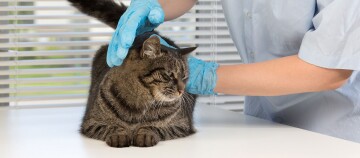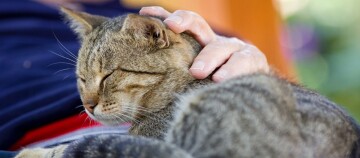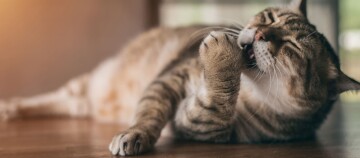Fur Twitching, Panic and Wild Raving - Rolling Skin Syndrome
17.10.2022 - Reading time: 5 minutes
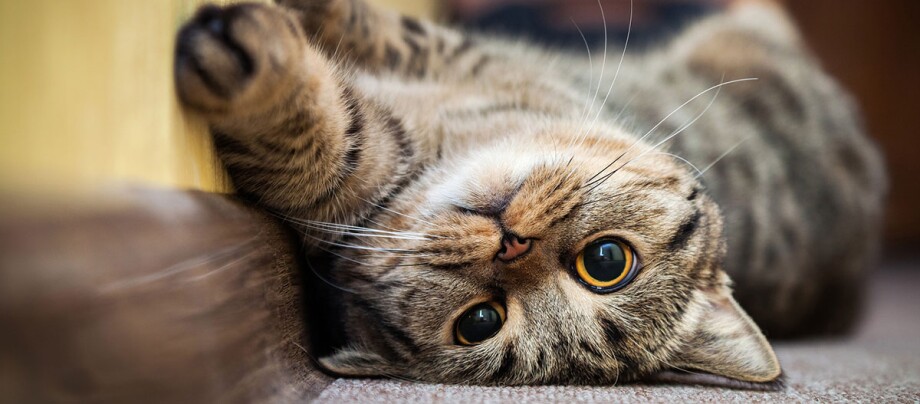
A shock effect like something out of a horror film: the cat twitches, jumps, screams and wildly tries to scratch its back and bite its tail. All attempts to address or calm the animal are to no avail. The skin on its back twitches, the ears move quickly in different directions and the cat's gaze becomes fixed. Just as suddenly as it happened, it is over again and the cat behaves as if nothing had happened. What looks like the animal has just suffered a fit of raving madness is a symptom of a disease that is still little researched: rolling skin syndrome.
What is rolling skin syndrome?
The supposed “obsession” of the house cat has a scientific name: Feline Hyperaesthesia Syndrome, but more commonly known as RSS or “rolling skin syndrome”. The term refers to extreme physical sensitivity. Every touch is (temporarily) perceived by the cat as extremely painful. Hypersensitivity has dramatic effects on the animal: some cats behave like wild furies from one moment to the next, others appear hypnotised or as if they are hallucinating and chasing invisible prey. During a seizure, the cat rushes across the home without any apparent reason. Sometimes the animals also spontaneously pass urine. The pupils of the cats are very dilated, the eyes glazed over, the animals appear frightened and do not react to their humans.
It is striking that many cats show aggression against their own tail – in extreme cases this can go as far as self-mutilation. In all cases, there is also the mysterious skin twitching in the back area. An attack lasts from a few seconds to about two minutes. In this respect, the rolling skin syndrome differs from the well-known “great five minutes” that every cat owner surely knows well from his pet. If such “fits of raving madness” occur with striking frequency, you should visit the vet to clarify whether your cat is ill or simply has a temper.
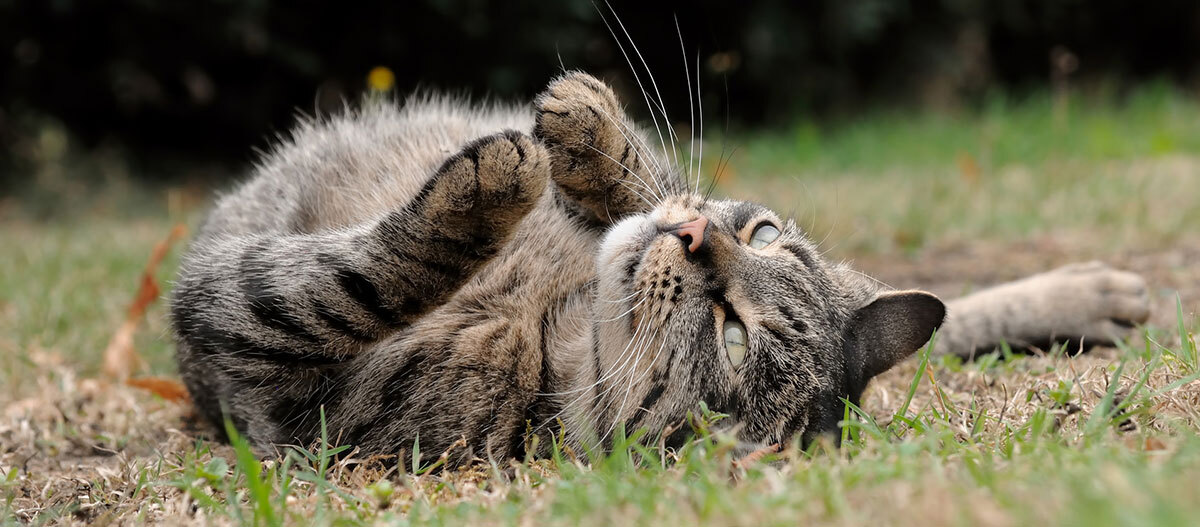
What are the symptoms of rolling skin syndrome?
Itching skin and increased scratching usually indicate a parasite infestation or an allergy. Rolling skin syndrome, on the other hand, is a nerve disorder that can be triggered by various factors and promoted by damage to the spinal muscles. The main cause of rolling skin syndrome is surprisingly simple: stress. Cats are extremely sensitive to any change or disturbance in their environment. Whether it is a new, dominant companion in the house, strange people or a baby in the family, a change in the daily routine in the household, a change of location due to a move, as well as grief and losses can psychologically upset sensitive cats.
Furthermore, stress often accompanies physical pain. Last but not least, cats can suffer from epilepsy: rolling skin syndrome can be a concomitant of a neural disease. Some researchers even suspect that it is a special subtype of epilepsy or an obsessive-compulsive disorder. Incidentally, rolling skin syndrome can also in turn promote organic secondary diseases: Excessive grooming and scratching damages the cat’s skin and promotes inflammation and skin problems.
Is there a rolling skin syndrome treatment?
To help a cat suffering from rolling skin syndrome, first have a vet determine whether an organic or neutral factor is triggering the symptoms, for example, by a previously undiscovered disease, epilepsy or food intolerance. In such cases, the cause should first be treated medically. In some cases, even a change to a special food is effective. If there are no clinical reasons, try to find out what the stress factor could be, eliminate it if possible or try to alleviate the excitement for the cat by giving it special attention. The cat should be spared an unsettled environment, many strangers coming and going, or noise.
The approaches for a successful treatment differ according to the cat’s nature: for one cat special cuddling sessions or measures such as Tellington Touch Therapy (a special massage technique) can already help. Avoid touching the cat’s back or tail too firmly. Other cases can be successfully treated with antidepressants: These are also available for the needs of pets. In particularly complicated cases, you should consider seeing an animal therapist.
Does rolling skin syndrome reduce life expectancy?
Rolling skin syndrome has not yet been exhaustively researched and fortunately is also a comparatively rare disease. A therapy to cure it is not yet known, treatment is mainly based on drug attenuation and avoidance of potential triggers and strict routines in the cat’s life. Rolling skin syndrome occurs predominantly in young cats between one and four years of age. Certain cat breeds, such as Siamese or Burmese cats, are more frequently affected.
However, if the stress can be minimised and other triggers can be eliminated, current evidence suggests that rolling skin syndrome has no effect on a cat’s life expectancy: with good care and otherwise stable health, a cat with rolling skin syndrome can live to be as old as a fellow cat without the condition. However, the stress syndrome itself can have a negative effect on the general condition of the cat.
